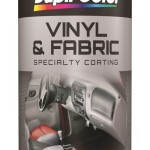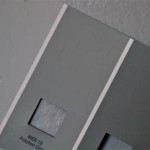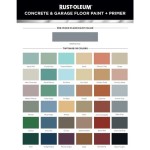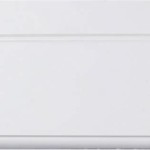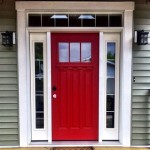Can You Match Paint From a Photograph? Exploring the Possibilities and Limitations
The desire to precisely replicate a color from a photograph arises in numerous situations. Homeowners may wish to touch up existing paintwork, matching the color of a wall or trim piece without knowing the original paint code. Designers might be tasked with recreating a specific aesthetic found in an inspiring image. Restorers often face the challenge of matching faded or damaged colors in historical objects or artwork. The question then becomes: how effectively can one match paint accurately using only a photograph as the source?
Matching paint from a photograph is technically possible, leveraging advancements in colorimetry and digital imaging. However, it’s crucial to understand the inherent limitations and potential inaccuracies that can arise during the process. Achieving a truly perfect match solely from a photograph is often unrealistic. Various factors influence the appearance of color in a photograph, creating discrepancies between the digital representation and the actual paint color. Despite these challenges, technology and techniques exist that significantly improve the likelihood of achieving a close and acceptable match.
The Complexities of Color Perception in Photography
Several variables contribute to the distortions and variations in color representation within a photograph. These factors fundamentally affect the reliability of using a digital image as the primary source for paint matching. The most critical aspects to consider are lighting conditions, camera settings, display calibration, and the inherent limitations of digital color spaces.
Lighting Conditions: The most significant factor influencing color appearance is the ambient lighting at the time the photograph was taken. Different light sources exhibit distinct color temperatures. For example, incandescent lighting tends to cast a warm, yellow hue, while fluorescent lighting often has a cooler, bluer tone. Natural daylight itself varies in color temperature depending on the time of day, weather conditions, and geographic location. These variations alter how the camera sensor captures the color information, leading to discrepancies in the digital image. A paint color photographed under warm lighting will appear different from the same color photographed under cool lighting. Using software to compensate for these color casts is possible but often requires manual adjustment and careful consideration of the original lighting conditions, which are often unknown.
Camera Settings: The camera's white balance setting plays a crucial role in correcting for color casts introduced by different light sources. An incorrect white balance setting can significantly skew the colors in the photograph. Other settings, such as exposure and saturation, also impact color accuracy. Overexposure can wash out colors, making them appear lighter and less vibrant, while underexposure can darken colors and obscure subtle nuances. Similarly, adjusting saturation levels can artificially enhance or diminish the intensity of colors. When matching paint, it's crucial to know if any of these settings were adjusted during the time the photograph was captured.
Display Calibration: The accuracy of the colors displayed on a computer monitor or mobile device is dependent on proper calibration. Uncalibrated displays can exhibit significant color deviations, rendering colors inaccurately. What appears as a perfect match on one screen may look noticeably different on another. For critical color-matching applications, it is essential to use a calibrated monitor to ensure a more accurate representation of the colors in the photograph. Ideally, the monitor should be calibrated using a hardware colorimeter, which measures the display's color output and creates a custom profile to correct for any inaccuracies. Without calibration, visual assessment of colors from a photograph becomes inherently unreliable.
Digital Color Spaces: Digital images are typically encoded using a specific color space, such as sRGB or Adobe RGB. Each color space defines a range of colors that can be represented. sRGB is the most common color space used for web images and standard displays, while Adobe RGB offers a wider color gamut and is often preferred for professional photography and graphic design. However, even with a wider color gamut, not all colors present in the real world can be accurately captured and reproduced digitally. This limitation is particularly relevant when dealing with highly saturated or unusual colors. The conversion from a physical paint color to a digital representation inevitably results in some loss of information, impacting the accuracy of the match.
The Role of Technology in Paint Matching
Despite the inherent challenges, technological advancements provide tools to facilitate the process of matching paint from photographs. Spectrophotometers, colorimeters, and specialized software applications all play a role in analyzing the colors in a digital image and translating them into paint formulas. These tools can significantly improve the accuracy of the matching process, although they are not without their limitations.
Spectrophotometers and Colorimeters: Spectrophotometers are instruments that measure the spectral reflectance of a surface across the visible spectrum. They provide a precise and objective measurement of color, independent of lighting conditions and human perception. While a spectrophotometer cannot directly analyze a photograph, it can be used to measure the color of a physical sample extracted from the photographed area. This sample can then be compared to the colors in the photograph to adjust for any distortions caused by the camera or lighting. Colorimeters are similar to spectrophotometers but typically measure color in terms of tristimulus values (XYZ or Lab color space) rather than the full spectral reflectance curve. Colorimeters are generally less accurate than spectrophotometers but are also more affordable and portable. They can be used in the same way as spectrophotometers to measure physical samples and compare them to the colors in the photograph.
Software and Apps: Various software applications and mobile apps are designed to analyze colors in digital images and suggest matching paint colors from manufacturer databases. These tools typically use algorithms to identify the dominant colors in a selected area of the photograph and then search for corresponding paint colors in their libraries. Some apps even allow users to calibrate their mobile device's camera to improve color accuracy. The effectiveness of these tools depends on the quality of the photograph, the accuracy of the software's color analysis algorithms, and the comprehensiveness of the paint color database. While these apps and softwares help to select colors, they do not give exact matches and require user input.
Digital Color Matching Systems: Certain paint manufacturers and retailers offer digital color matching systems that utilize spectrophotometers or colorimeters to analyze samples and generate custom paint formulas. These systems often integrate with software that can analyze digital images and suggest initial color formulations based on the colors in the photograph. A physical sample is then scanned, or users can manually input values to refine the formula until a satisfactory match is achieved. These systems represent a more sophisticated approach to matching paint from photographs, combining digital analysis with physical measurement and manual adjustment.
Key Considerations for Achieving the Best Possible Match
To maximize the likelihood of achieving a satisfactory paint match from a photograph, several practical considerations should be addressed. These considerations involve optimizing the photograph itself, utilizing appropriate color analysis tools, and understanding the limitations of the process.
High-Quality Photograph: The photograph should be taken under diffused, natural lighting to minimize color casts and shadows. Avoid using flash, as it can distort colors and create hotspots. Ensure the camera's white balance is set correctly or adjusted in post-processing. The photograph should be in focus and have sufficient resolution to allow for accurate color analysis. Capture multiple photographs under slightly different lighting conditions if possible, to provide a range of color references.
Selecting the Right Tools: Choose a color analysis tool that is appropriate for the application. For critical color matching, a spectrophotometer coupled with color-matching software is the most accurate option. For less demanding applications, a colorimeter or a mobile app may suffice. Consider the size and shape of the area to be matched. It may not be possible to extract a precise sample due to small dimensions. Utilizing larger areas surrounding the target area to get a broader reading is advisable in such instances.
Understanding Limitations and Expecting Adjustments: It is crucial to acknowledge that matching paint perfectly from a photograph is unlikely. Factors such as lighting variations, camera settings, display calibration, and the inherent limitations of digital color spaces all contribute to inaccuracies. The initial paint formulation derived from the photograph should be considered a starting point. It is generally necessary to compare the resulting paint color to the original area and make adjustments as needed. Test the color in both natural and artificial lighting, as the appearance of the paint can change depending on the light source. Be prepared to refine the formula multiple times to achieve a satisfactory match, potentially involving the addition of tints or adjustments to the color ratios.

How To Match A Paint Color From Picture Entri Ways

How To Match A Paint Color From Picture Entri Ways

How To Match A Paint Color From Picture Entri Ways

How To Color Match A Paint Shade From Photo

Color Match Any Photo Using Acrylic Paint The Basics Every Artist Should Know Amanda Rinaldi Skillshare

How To Match A Paint Color From Picture Entri Ways

How To Find A Paint Color From An Image

How To Find Matching Paint Colors From An Photo
How Can A Machine Match Paint Color Perfectly Howstuffworks

Photo Uploader Valspar Paint
Related Posts

